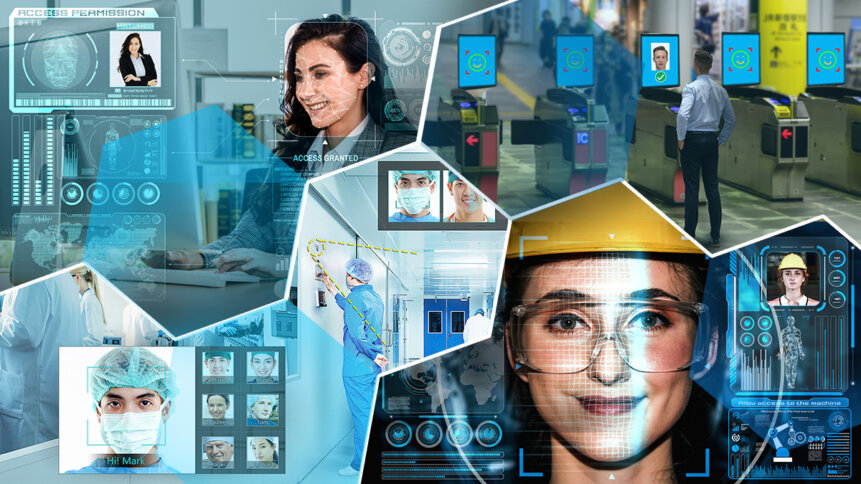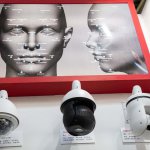Facial recognition – going beyond Big Brother

|
Getting your Trinity Audio player ready...
|
In Part 1 of this article, we sat down with Terry Schulenburg, VP of Business Development at CyberLink, a leading facial recognition company, to examine the evolution of facial recognition technology, and see whether it was safe and effective enough to be widely deployed in the US.
While we had Terry in the chair, it seemed only right to see whether facial recognition could cope with some edge cases, and to define the battle for hearts and minds it might face in the wider context of its use cases at various levels of US society.
THQ:
In Part 1, we talked about a company that installed facial recognition at its turnstiles, and within a month, user resistance had been more or less destroyed. Is it fair to say then that the idea of facial recognition being dangerous is more inherently appealing to people than the facts as they exist today – until they’re shown how much hassle it can remove from their lives?
TS:
Well, yes, but it’s not only the removal of hassle. That same company, we put it in at their doors and people went for it in a big way. One month later, they came back and said “Listen, every person here gets a $5 a day allowance for lunch. We have a cafeteria. The problem today is there’s a card. And so, Terry uses $2, then hands his card to Tony, says ‘Hey, Tony, I still have $3 on this. Why don’t you use my $3, you can get yourself an $8 lunch now.’” They were sharing those cards.
So they asked us to link face recognition to those daily allowances, connected to the cash registers in the cafeteria, so now, not only do people not have to carry their cards, the money they don’t use is accumulated in their accounts. That makes life easier for everybody.
So it’s not just removing hassle, it’s adding value too.
It’s funny – in Part 1, you asked whether the US was ready for facial recognition technology. And it isn’t. There’s so much of the US that is still very paranoid. But if you show people how useful it can be and how safe it is, it wins a lot of hearts and minds.
Facial recognition and consent.
There’s a point of consent, of course. If I volunteer, if I give you consent to use my face, and I know you’re only going to use it in these instances to which I’ve consented, then go for it. I trust you. That’s where this has really taken off in the United States. People go to the airport, they love using this technology because they know biometrics help make the process faster and easier. Yes, they can go through a non-biometric process, but biometrics make it faster and easier. We’re Americans, we love things to be faster and easier.
THQ:
Faster and easier is one thing, but another element from fiction that puts people off is the “Big Brother” angle – the idea that some technology company can see them and identify them. How do you get around facial recognition? In fact, can you get around it in its new, evolved, sophisticated version.
TS:
It’s really easy, yes. I mean, the funny thing is, if you look at the rules from the Qatar World Cup, you’re not allowed to wear a helmet, you’re not allowed to wear a face mask, you’re not allowed to do any of these things. But to screw up facial recognition, all you need to do is pull your hat down a little bit more. The only way to do facial recognition well is to get as much of the face in the image as possible. That’s why it works really well in secure environments like locker room doors.
The athletes aren’t going to be putting a mask on or trying to fake it, they want to get into the locker room. No, they’re going to present their face. But if I want to just blend in with the crowd, I can get really thick glasses that cover more of my face, I can pull my hat down, I can pull my mask up just a little bit more. Getting around facial recognition, if I were a bad actor, would be very simple. It’s not there to pick criminals out of a crowd. It’s there mostly for an already bought-in community – people that want to use it for secure access to places they belong.
But in Qatar, they’re also using it when they have people causing problems, people that are breaking the law. I know everybody that’s in the stadium, I have their faces – or at least the mathematical models of the nuances that make their faces their faces. If something were to occur in the stadium, I can go back and find that person. And what they’ve done is they’ve tied it into the passport database.
So as people enter the country, that information is then shared with the venues so that they can know Terry showed up, you know, Terry came into our country on Monday, Terry was at the event on Thursday. And they have that information, they have it for contact tracing so that they can share it if something were to happen. If there was a breakout or pandemic, they could share that information. “You were in this stadium at the time this occurred, we want to make you aware of it, you should see a doctor.”
And also, if something were to happen, they could pick me up on the camera and say, “Yep, we know who that is. And they were doing something that was illegal in our country.” Those are the things they’re using it for at the events.
THQ:
That leads on to a question of USP – what’s the unique selling point of facial recognition? Is it the safety of it, the convenience of it, or something else? How do you persuade, say, the “very paranoid” US to adopt it?
TS:
As we’ve demonstrated with the case of easy access turnstiles, in the United States, the convenience factor works great when I volunteer my information.
Facial recognition while black?
THQ:
In the land of the free and the home of George Floyd though… are you not fighting the idea that some people are justifiably paranoid? For instance, people could be “facially recognized while black?”
TS:
Absolutely. What we don’t ever want to have happen is people being accused of something because their face was misrecorded, misrepresented, or misrecognized. That’s why most states have outlawed facial recognition on the criminal justice side of security. Because the computer may say “Yep, that’s Terry.” And even though it was really dark and to a human eye, we can’t even tell who it is, the facial recognition says it’s Terry, so we’re gonna put you in prison until we can prove that you’re innocent.
In the United States, you’re supposed to be innocent till proven guilty, but that “guilt,” established by facial recognition, put people in prison back in the day, and later they found out that it wasn’t really them. There are a lot of really negative cases, because they were using facial recognition that wasn’t good quality, or they were using it in wrong ways.
For instance, you went by a Starbucks video camera and we caught your face. So we think you’re the perpetrator of some crime. So we’re going to bring you in and lock you up, because the facial recognition said it was you. We see this all the time on TV – that reflection in the mirror, this person coming upto that door, let’s use that reflection in the mirror and do facial recognition on it, and we’ll determine who that is. And now we’ve captured this person.
That’s just. Not. Possible.
There’s just not enough data to ever do that. And when you don’t have that high level of confidence, you can’t do it. That’s the biggest problem.
The problems with facial recognition.
There are two problems in the United States. The problem of fiction, and the problem of history. The problem with fiction is “We don’t know what they’re doing with our data.” You know, we always know that Alexa is listening, and we’ve seen enough movies and TV shows to know what people can do with someone else’s face. Well, that’s the problem of fiction – it embeds that assumption that people are doing anything with your data just because it’s your data. We discussed in Part 1 the fact that we the facial recognition people don’t have your faces. We can’t get your faces from the way our AI works.
And the second problem is the problem of history. I’ll tell you a really sad story. In Louisiana, this man that was taking a night course at a college. He was going every Tuesday night to this night course. Then he started having an affair midway through the semester. So he’d show up in college for the first class, spend five minutes there, and then run off with this other woman.
His campus had facial recognition at the time, and they realized he wasn’t spending much time in class. They used it in court. And he said “Wait, I never gave you permission to use my face in this situation, you can’t do that.”
And he was correct.
They weren’t allowed to use his face, because he never gave them his consent. But they were still able to prosecute him. And you know, his then-wife was able to file for divorce and win the case because he was cheating on her, and they had proof of that.
So these are the types of things that that rubbed people the wrong way in the United States. As you say, I don’t want Big Brother watching me. I don’t want you to know what I’m buying and what I’m shopping for. But the retail establishments are struggling right now, because they’re competing with online, because online stores collect that data as the price of using their services. When I go to Amazon, and I pull up the clothes that I bought – for instance, I’m going to a funeral this weekend in Chicago, I needed a new tie. I got on Amazon, it said “Hey, Terry, here are the ties that will go with that last suit that you just bought. And we know your size, we know everything. Here you go.”
Competing with Amazon.
If I go to the retail store, say I go to Macy’s and do the same thing, I’ve got to tell the guy and start from scratch, you know, I’m at 38 large and this, and that, and the other thing. It’s a whole process, and it’s not as easy as Amazon, because Amazon collects and remembers the data of what I’ve bought before.
Well, now they’re putting kiosks in at retail stores, where you walk in and it recognizes your face, and links to your data, so it can do the same thing – “Hey, Terry, welcome back, this is what you bought last time, we have these shirts, and we have these ties on sale, they’ll work out perfectly for you.” So they’re giving me kind of that online personalization experience at the retail store, so they can compete head to head with the online experience. Now I can go to Macy’s, pick up that tie and not have to wait on Amazon’s shipping and supply chain.
So a lot of those types of things are where people in the United States are saying, “Wait, you can do that?” – and they’re saying it not like “Why can you do that?” They’re saying it like “Cool – sign me up!”
In Part 3 of this article, we’ll take a deeper look at the differences between people’s standard perceptions of facial recognition and its modern possibilities, to find out how you turn techno-paranoia into techno-adoption.










